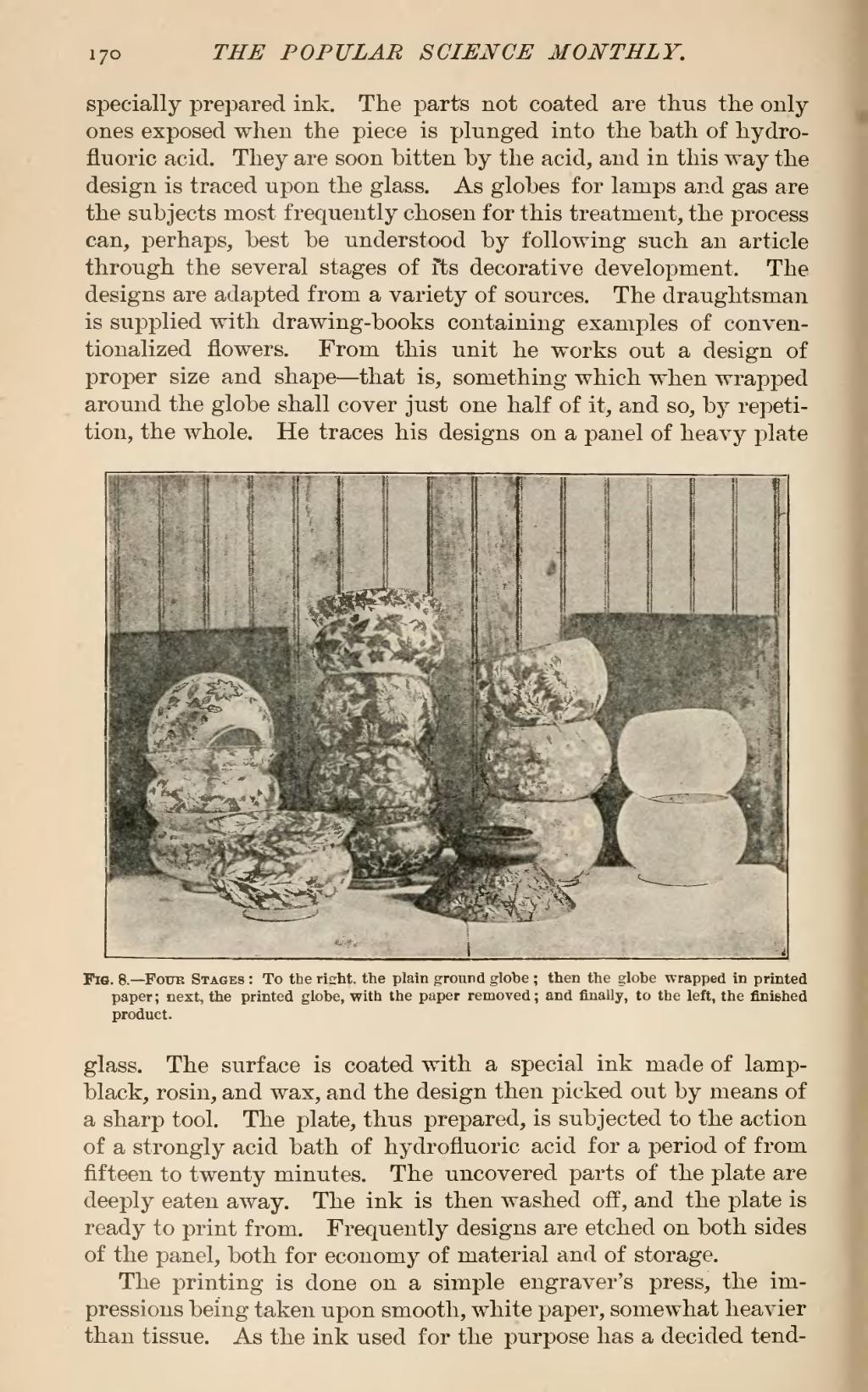specially prepared ink. The parts not coated are thus the only ones exposed when the piece is plunged into the bath of hydrofluoric acid. They are soon bitten by the acid, and in this way the design is traced upon the glass. As globes for lamps and gas are the subjects most frequently chosen for this treatment, the process can, perhaps, best be understood by following such an article through the several stages of its decorative development. The designs are adapted from a variety of sources. The draughtsman is supplied with drawing-books containing examples of conventionalized flowers. From this unit he works out a design of proper size and shape—that is, something which when wrapped around the globe shall cover just one half of it, and so, by repetition, the whole. He traces his designs on a panel of heavy plate

Fig. 8.—Four Stages: To the right, the plain ground globe; then the globe wrapped in printed paper; next, the printed globe, with the paper removed; and finally, to the left, the finished product.
glass. The surface is coated with a special ink made of lamp-black, rosin, and wax, and the design then picked out by means of a sharp tool. The plate, thus prepared, is subjected to the action of a strongly acid bath of hydrofluoric acid for a period of from fifteen to twenty minutes. The uncovered parts of the plate are deeply eaten away. The ink is then washed off, and the plate is ready to print from. Frequently designs are etched on both sides of the panel, both for economy of material and of storage.
The printing is done on a simple engraver's press, the impressions being taken upon smooth, white paper, somewhat heavier than tissue. As the ink used for the purpose has a decided tend-
